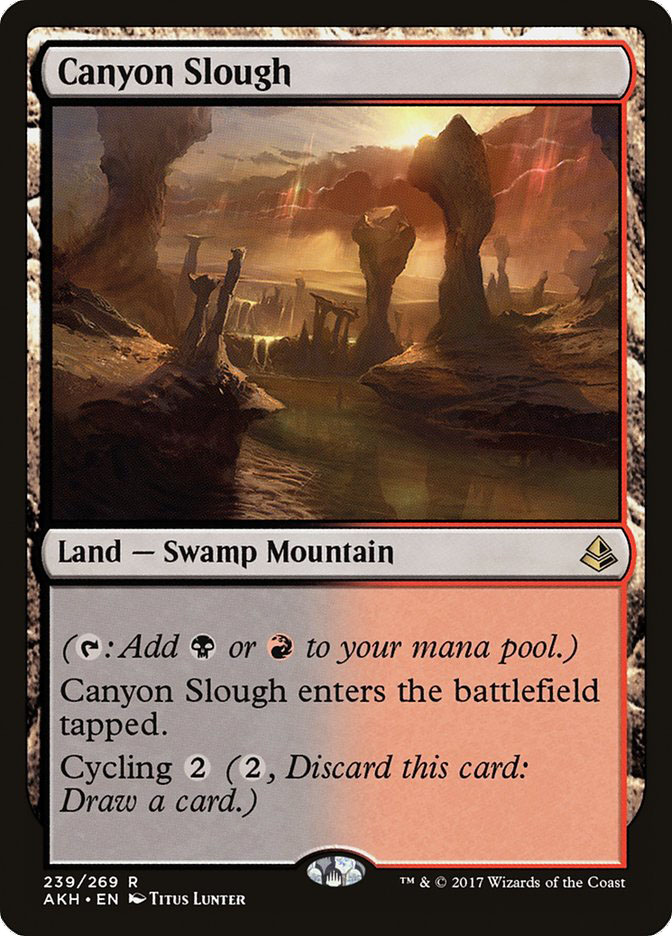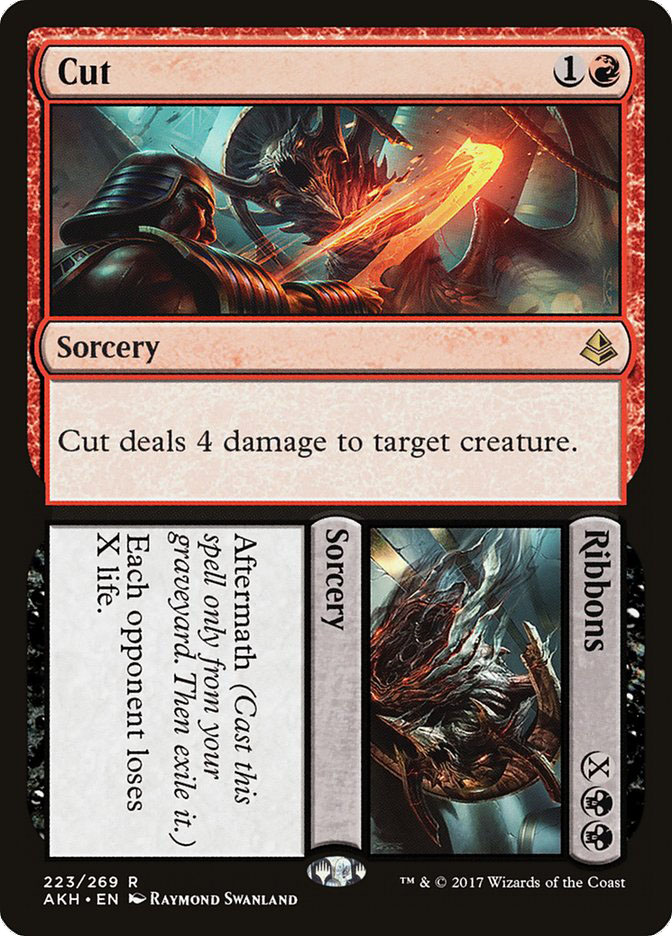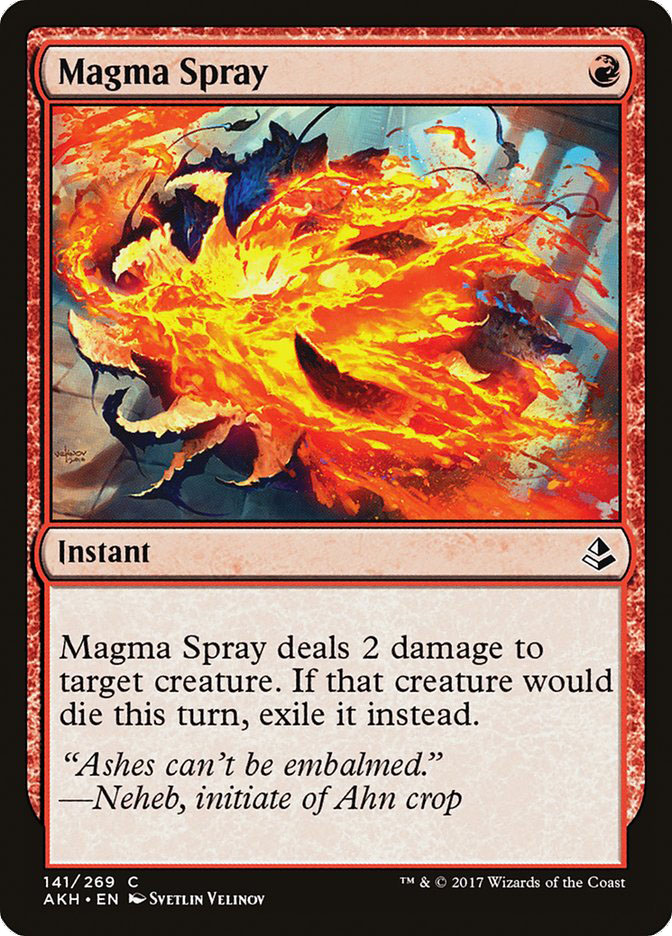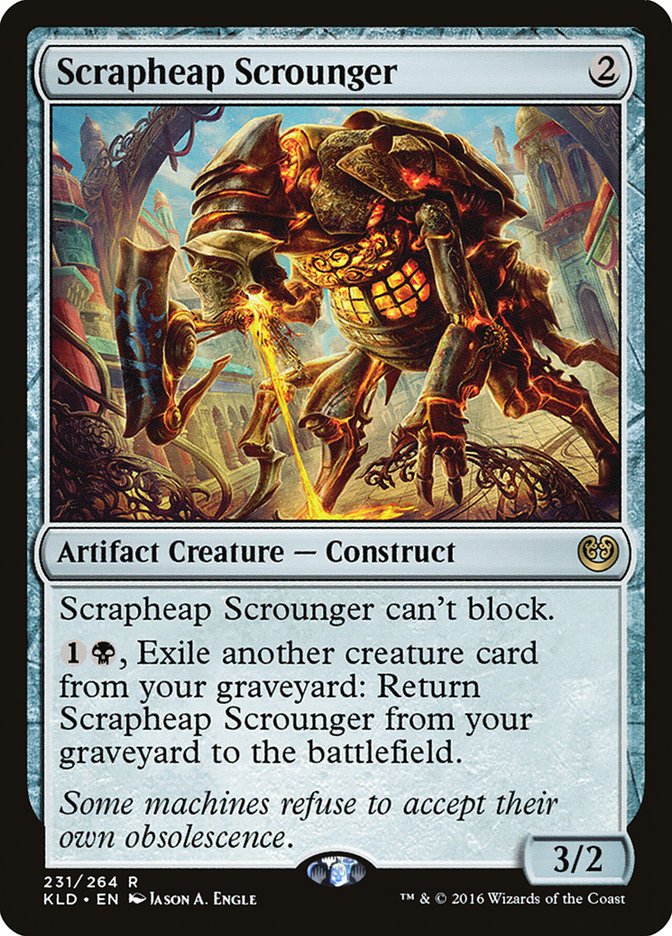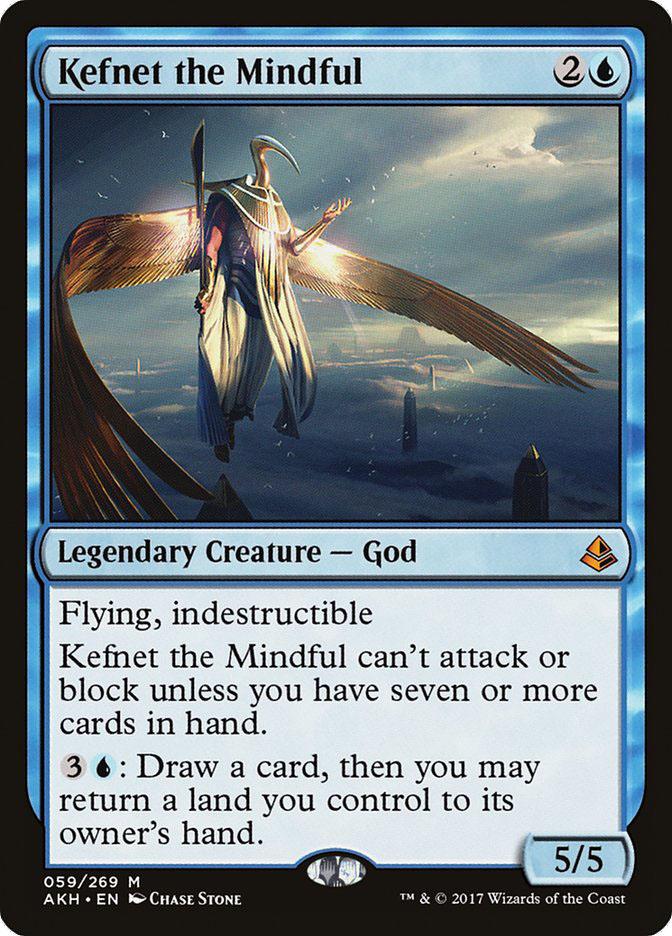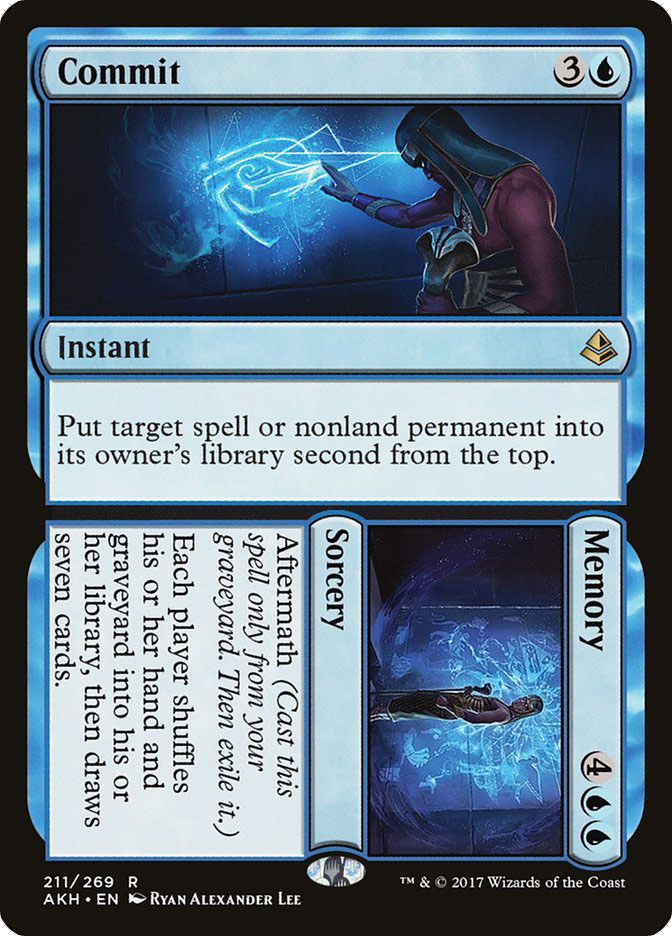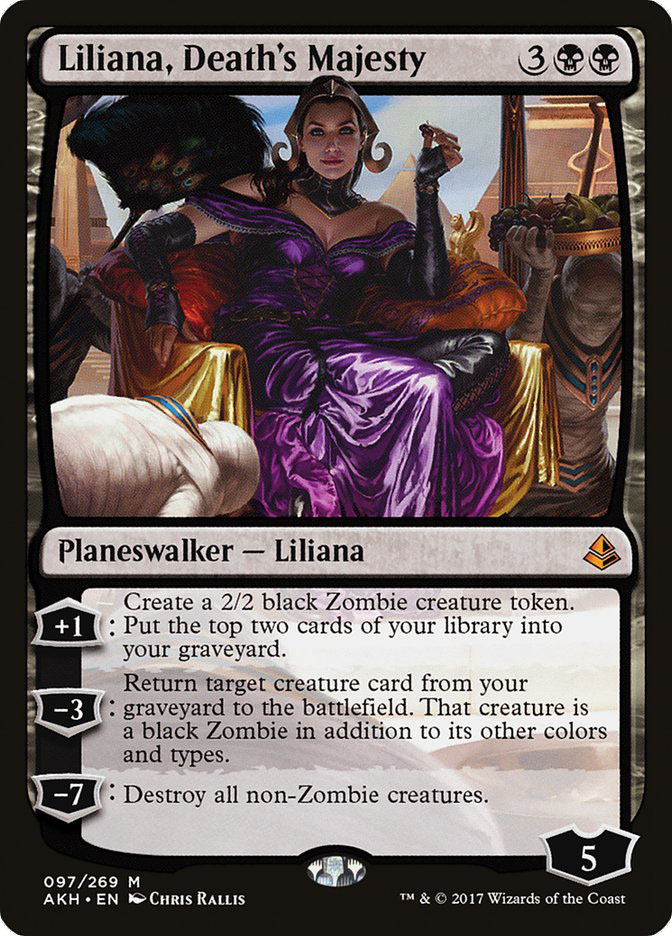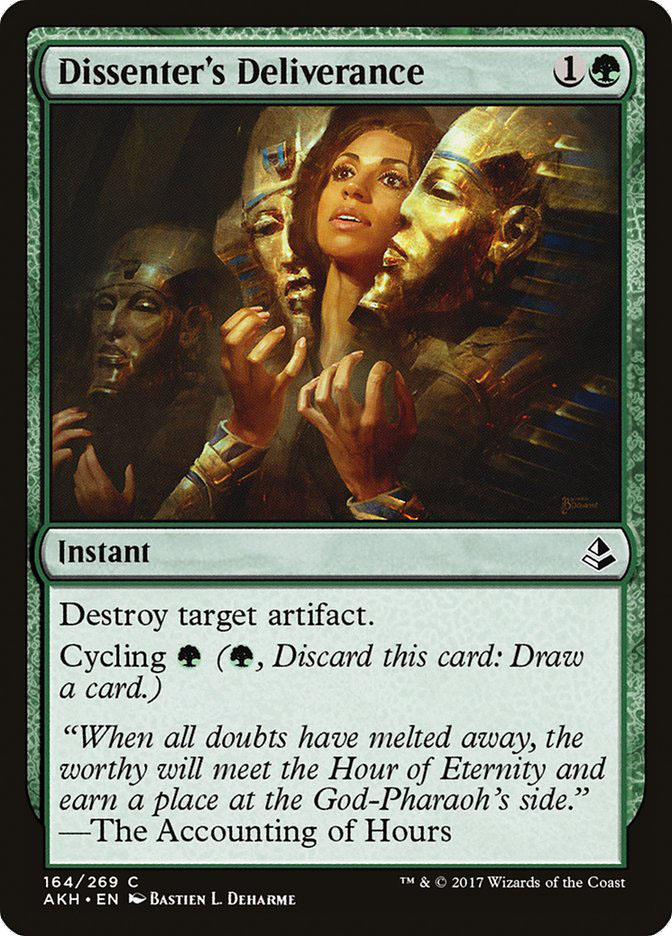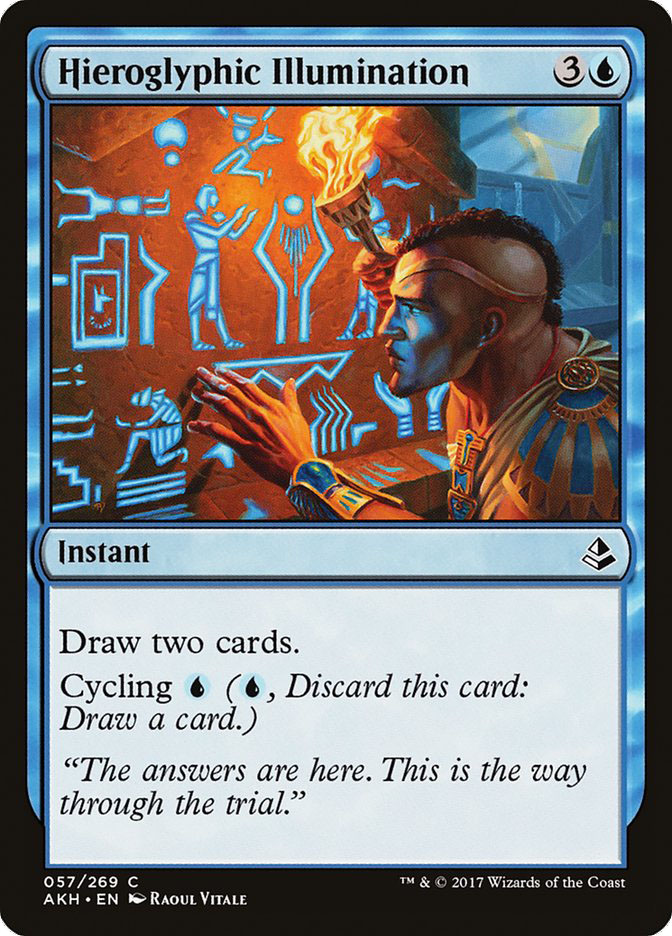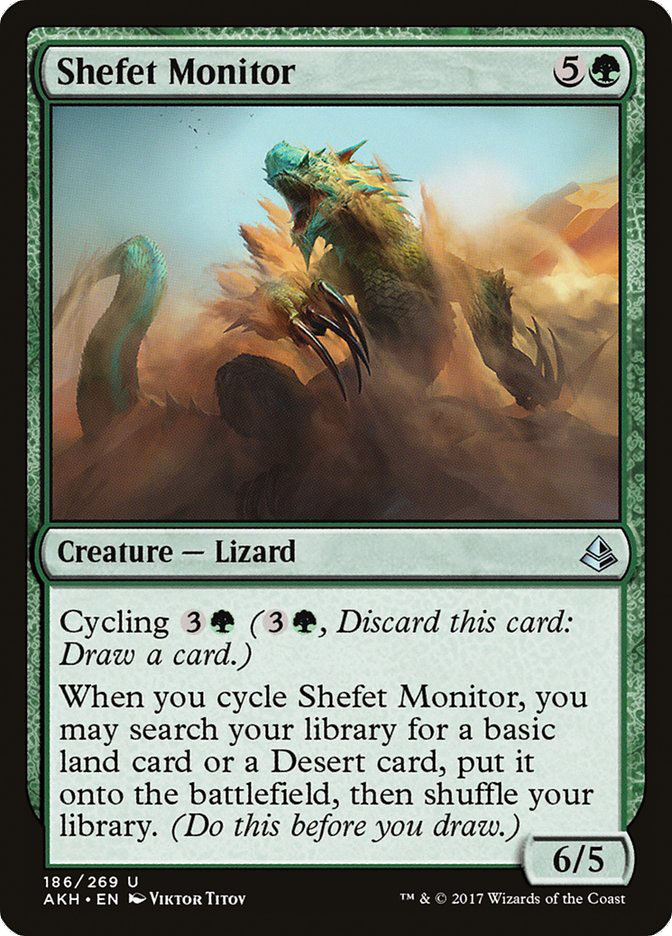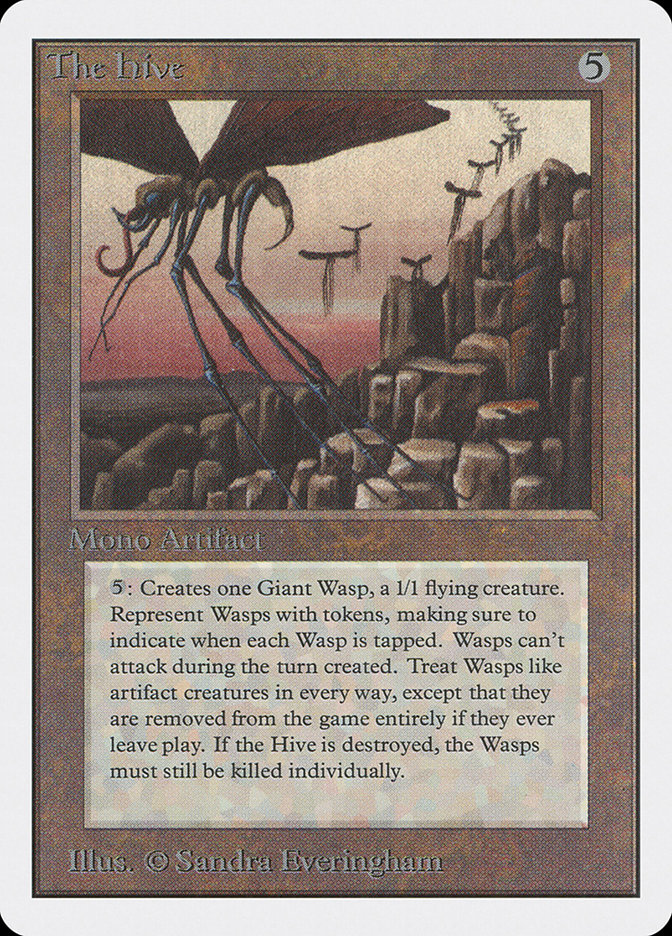One of the most important things that you can do if you’re working on making a control deck is to understand just what it is you are answering. In the early moments of a format, that target can change, and even change rapidly, but one of the big reasons that control decks struggle in the early days of a format is that the control deck has plenty of answers, but they aren’t answers that are lining up with the opponents that show up.
I remember this moment very clearly in an early moment in Standard after the release of Return to Ravnica. I was playing U/W Control, and one of my opponents was playing Black Devotion with a splash for Green. I had their Vraska the Unseen hidden under a Detention Sphere and a Pack Rat hidden under another Detention Sphere.
Then, it hit.
My world exploded, and a game that had felt well in hand turned into an utter nightmare.
The next week, I became a Planar Cleansing deck. That week, Andrew Tenjum would win the SCG Open with Black Devotion splashing green.
This week, here was our champion:
Creatures (18)
- 2 Archangel Avacyn
- 4 Thraben Inspector
- 2 Thalia, Heretic Cathar
- 4 Scrapheap Scrounger
- 4 Toolcraft Exemplar
- 2 Walking Ballista
Planeswalkers (4)
Lands (25)
Spells (13)

There are unsurprisingly few new cards in the deck. Mardu Vehicles has been a well-honed machine for a while. Even so, in the full 75 cards, these cards made the cut:
It’s not much, but the cards did show up. Maybe more important to talk about, however, was how conservative and expected the top metagame was. Five Mardu Vehicles decks made the top of the field, and one B/G Delirium deck joined them. More exciting, however, was that two new archetypes also joined the Top 8: Mono-Black Aggro in the quarters, and W/R Humans in the semis.
This meant there were sixteen Thraben Inspectors in the Top 4; if we exclude the W/R Humans deck, the specific choices of the top Mardu Vehicles decks are interesting, but are largely only minor changes from what we’ve seen. What is clear is this: while the metagame may evolve from here, the baseline of Mardu Vehicles isn’t merely strong, it is also familiar. The small choices – a Hazoret the Fervent and Cast Out, a Cut//Ribbons, a Cultivator’s Caravan into Glorybringer – all of these shift the deck slightly, but they are all 4 Scrapheap Scrounger, 4 Thraben Inspector, 4 Toolcraft Exemplar, 4 Gideon, Ally of Zendikar, 4 Heart of Kiran, 4 Unlicensed Disintegration, and 4 Fatal Push. Okay, almost – the deck with two Cast Out only ran three Fatal Push, but you get the idea.
This does mean that, overall, we’re still talking about the same target for the control decks: an aggressive deck with 4 Scrapheap Scrounger, 4 Gideon, Ally of Zendikar, and 4 Heart of Kiran. This is a challenge.
What lessons can we learn from those decks that rose to the top?
The Cream
Between the SCG Standard Open and the SCG Classic in Atlanta, there were sixteen classic blue-based control decks that made it to the top of the field – the Top 64 of the Open and the Top 32 of the Classic. Here is the top-finishing deck from the Open:
Creatures (4)
Lands (21)
Spells (35)

The first thing that come to mind for me in this deck is that we’re looking at thirteen cycling cards, plus two Pull from Tomorrow, in addition to the classic four Glimmer of Genius and four Torrential Gearhulk.
That is a lot of card draw.
It isn’t surprising, then, to see the disappearance of Anticipate. Anticipate, to quote my friend Ronny, “has always sucked.” That doesn’t mean we don’t sometimes play it, but we’ve played it largely because we need something to do early, and we’re looking for a little bit of ability to find the other cards we want.
One of the big shifts in this deck is that it doesn’t have any “clever” alternate win conditions. While there are some of those choices in the sideboard, the card draw in this deck means that it can count on getting to the four Torrential Gearhulks in the deck. Some of the filler we used to see, in the form of Blessed Alliance or other cheap removal, is completely gone in favor of the streamlining from Cast Out, Censor, Magma Spray, and Essence Scatter. This makes sense; collectively, these are all clean answers.
Only one Sweltering Suns (with another in the sideboard) is one of those choices that I imagine will get changed moving forward. With a world utterly full of aggressive decks, this feels like a decision that could be slightly shifted. In addition, that fourth Magma Spray is looking awfully appealing in light of that Top 8.
There is a real question that comes out of another choice: Nahiri, the Harbinger in the sideboard. Is this the kind of card that might make sense in the maindeck, perhaps over some of the less powerful cards or the more specialized ones? While there aren’t many great answers to Cast Out, one of the Top 4 decks did have Cast Out of its own, and Anguished Unmaking sees some play now and feels likely to see more play if slower decks emerge. Nahiri, the Harbinger can get rid of some of the stickier cards, serve as a win condition, and not bring back any baggage if the opponent kills it.
I looked into exploring this question in a build similar to Matthew Wright’s deck, cutting a Torrential Gearhulk, a Censor, and a Cast Out for two Nahiri, the Harbinger and a Linvala, the Preserver, and I found that the card definitely pulled its own weight, so perhaps there is more here to be considered.
Creatures (5)
Lands (13)
Spells (42)

Slightly further down, we see another take on control with many of the same choices but including an extra Pull from Tomorrow over a fourth Censor and the full four Magma Spray. It does include a few other new cards, though:
Kefnet the Mindful feels a little strange to me, even with Pull from Tomorrow and Memory from Commit//Memory. Drawing cards is an important payoff, but it seems very easy for Kefnet to be dead in this deck while aggressive cards just beat you down. I could imagine the card if there were just a little more help for it – a Skyline Cascade or two, for example. Still, if it is combat-ready, the card is an utter brick wall on the defense, and it ends the game rapidly.
Commit on Commit//Memory, on the other hand, feels like a powerhouse. While three is a hefty amount, I find myself reminded a bit of Hero’s Downfall. This card is not that good, as four mana is a great deal more than three, but it is still pretty damn good. Taking care of basically anything is pretty incredible.
Again, the full 75 cards in this deck include extra Sweltering Suns in the sideboard. Until the metagame shifts, I expect it is going to make more sense to have those cards in the main deck rather than the board.
A bit down in the Top 32, we have an archetype we haven’t seen in a while:
Creatures (11)
Planeswalkers (3)
Lands (21)
Spells (25)

Amazingly, we have yet a few more new cards in the mix.
In a deck with Traverse the Ulvenwald; Ishkanah, Grafwidow; and more than one Gearhulk, it isn’t all that surprising to see Liliana, Death’s Majesty. It can be so important (and so much work) to kill a Spider-queen that getting it back and leaving a planeswalker around afterwards is pretty impressive.
In the desire to fit in all of the pieces, something had to give, and we’re down one Torrential Gearhulk (which is mostly fine), but, scarily, we’re also without the Magma Spray which helped us suppress Scrapheap Scrounger. Dissenter’s Deliverance is serviceable versus a Heart of Kiran, but it doesn’t do us much good versus an unending robot’s life. Those copies of Kalitas, Traitor of Ghet we see in the sideboard probably need to be thought of as potential maindeck cards.
Aside from the Memory side of Commit//Memory, there is also the Return side of Never//Return, but both of these are fairly unwieldy when it comes to a Scrounger. Technically, it’s possible that you’d be able to answer it with these cards, but it isn’t easy. Flaying Tendrils is a huge help from the sideboard, but I have a feeling that a part of the reason that this deck was on the bottom side of the Top 32 was that it was good, but it ultimately struggled with the difficulty of Scrounger, notwithstanding cards like Ishkanah, Grafwidow and the like.
Hieroglyphic Illumination’s appearance in the deck doesn’t really tell us too much. Personally, at this point I think the card is fairly weak unless you’re getting something for your cycling. Glimmer of Genius isn’t played so heavily because it says “draw two;” it’s played so heavily because scrying and then drawing is huge. The “one-casting-cost” version of Hieroglyphic Illumination is a pretty small payoff, with only Traverse the Ulvenwald getting anything out of it, and even then, with plenty of other ways to get there, this seems a bit unlikely to usually matter – though in some games I’m sure it will.
From there, down many, many places, we don’t see much in the way of other ideas. We see variable numbers of Disallow, Censor, Cast Out, and Magma Spray, and other variable concepts of what we ought to play for counterspells or card draw. Forsake the Worldly makes an appearance, and a large number of people sideboard planeswalkers or Sphinx of the Final Word (suggesting that considering how one might answer this is a question to answer one of these days). It isn’t until we are in the bottom part of the Top 64 that we see something strictly new.
Creatures (9)
- 2 Ishkanah, Grafwidow
- 3 Torrential Gearhulk
- 1 Noxious Gearhulk
- 1 Walking Ballista
- 1 Kefnet the Mindful
- 1 Shefet Monitor
Planeswalkers (3)
Lands (23)
Spells (25)

While I like the sideboard choices of Manglehorn and Dispossess, one of the things that I find truly intriguing is a singleton in Robert’s maindeck:
What an intriguing choice! While I can’t get behind a Torrential Gearhulk deck only playing Memory from Commit//Memory as its true card draw to feed the flashing artifact, the inclusion of Shefet Monitor is actually quite intriguing. This deck is much more a midrange deck, with only Censor and Commit as its “counters,” but in a more traditional control deck, it is easy to imagine plays like cycling Shefet Monitor with five mana open and using the new land to cast a Negate, Essence Scatter, Harnessed Lightning, or Grasp of Darkness.
It’s also easy to imagine cycling it on turn 4 for a huge advantage in any control mirror.
This is an avenue I plan on exploring more.
In the other event, Jonathan Thomas ended up in the Top 8 with a slight update on Temur Dynavolt.
Creatures (4)
Lands (14)
Spells (42)

One of the shocking things about this list to me is the very gentle shift the deck took. Three Essence Scatter, three Magma Spray, and three Censor found their way into the deck, but the Anticipates still managed to make the cut! This is actually a bit shocking to me, as I’ve never really found myself feeling like this deck was desperate to find any specific card, but rather just wanted to flow naturally. Brutal Expulsion still being in the deck is also a surprise, but I’ve found that I’ve mostly loved this card, even when there were other options like Natural Obsolescence, since relegated to the sideboard.
The strangest card in the 75 is not a new card, but rather Whirlermaker. This update on The Hive must be in there for those slow, slogging matchups, but it feels a bit underwhelming to me. Perhaps this is Whirler Virtuoso, misrecorded on the list – a choice I’ve made in my own Dynavolt decks.
In the running for most unusual build of all of the blue control decks, a special note has to go out to Aaron Barich’s U/W Control list:
Creatures (5)
Lands (12)
Spells (43)

What an interesting take! With four copies, Curator of Mysteries should be able to hit the table quickly if you need it to, though I expect it will usually be cycled. This cycling makes Spontaneous Mutation actually seem really reasonable; that card had always been worth thinking about as a solid removal choice, but lacked the sheer amount of graveyard fodder necessary to really make it work.
While there are a few choices I don’t really care for (I would like more countermagic and less Immolating Glare), another choice that stands out in the positive to me is four Pull from Tomorrow. While it may not have the end-the-game locking-out power that the lifegain from Sphinx’s Revelation brought to the table, it does feel like it demands that an opponent keep pressure on, lest everything be torn away. When you add in Forsake the Worldly to clear out Heart of Kiran or Scrapheap Scrounger (on top of the enchantments in the deck), the essentially nature of this deck feels like it might have something good going on.
Further down, a few more cards did end up seeing play in maindecks and sideboards. Here are some brief thoughts on them:
Gideon of the Trials is on my list to experiment with in heavier U/W Control decks. It reminds me of an incredibly power Icy Manipulator/Scepter of Domination, and I’ve always been partial to those effects, particularly when paired with cards like Fumigate.
Lay Claim is an interesting catch-all, though one wonders if it is necessary in the sideboard, as the fast and slow decks seem quite good against the card, and only the midrange decks feel weak to it.
Glorybringer, in the running for among the best cards in the set, is a truly awesome card which suffers in a pure control deck because it helps make creature removal live – especially Unlicensed Disintegration.
By Force may be quite solid, but it is hard not to just go to Release the Gremlins, unless you are truly trying to beat artifact decks to bits.
Cut//Ribbons might be fine, but it feels like it just is outclassed by so many cards, from Harnessed Lightning to Incendiary Flow to Magma Spray to Flame Lash; I don’t know that I’d run the card unless the metagame was specific and different than what we’re currently seeing.
The Questions
After going through all of the cards that saw play to some degree of success over the weekend, I know what I’m going to be focusing my thoughts on moving forward:
1) If Mardu Vehicles is a de facto target, how do we choose to balance our removal with other control elements like countermagic and card draw?
2) How many copies of Censor feel reasonable to run in decks that are already playing with Negate and Essence Scatter?
3) Is Shefet Monitor a strong choice for U/G(/x) control decks?
4) What is the best way to push Pull from Tomorrow?
5) Are planeswalkers a good call moving forward?
These are just the biggest questions I have right now. One thing I feel certain of, now that some initial targets are in mind:
Control is back!



